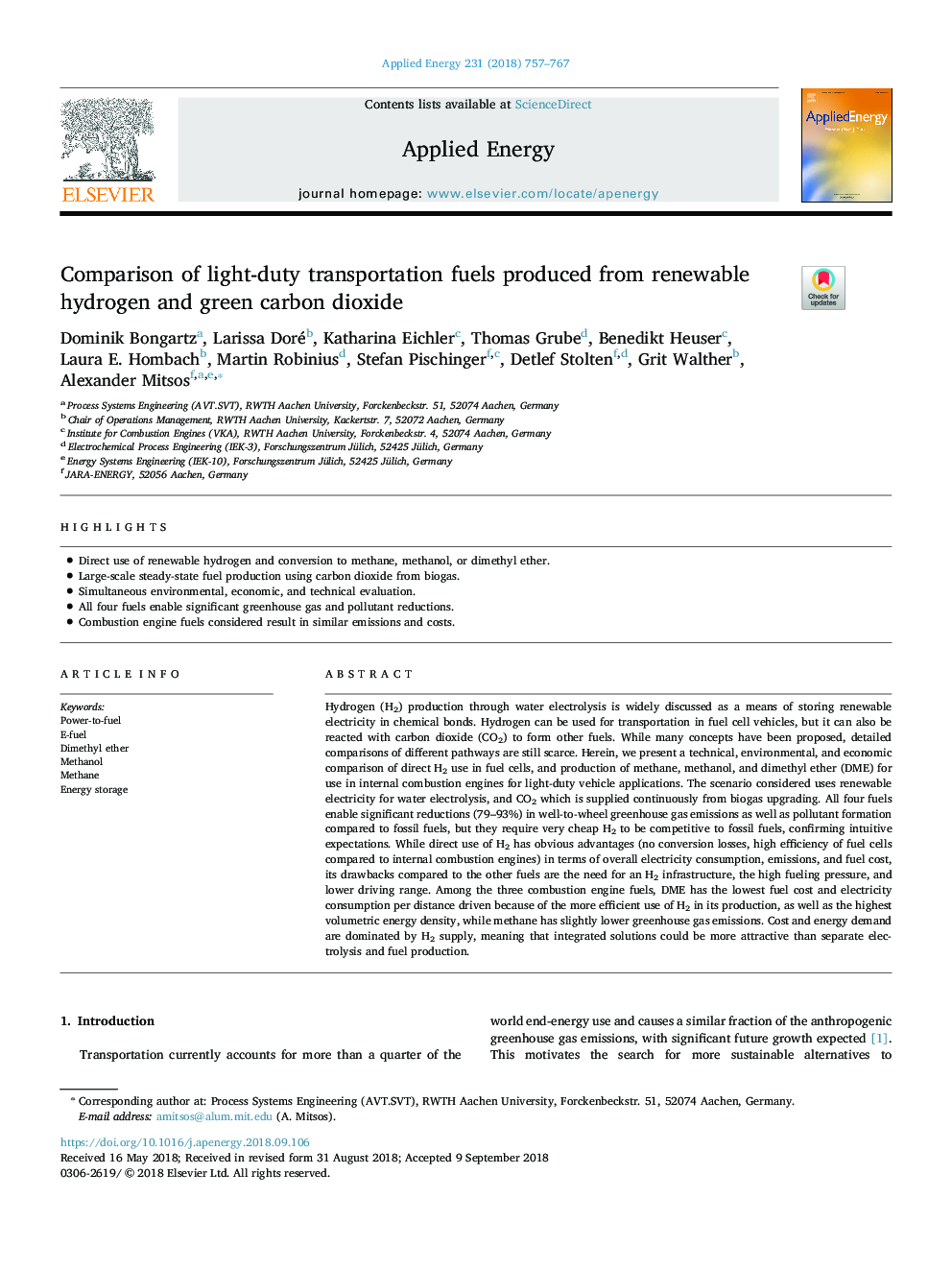| کد مقاله | کد نشریه | سال انتشار | مقاله انگلیسی | نسخه تمام متن |
|---|---|---|---|---|
| 10225264 | 1701164 | 2018 | 11 صفحه PDF | دانلود رایگان |
عنوان انگلیسی مقاله ISI
Comparison of light-duty transportation fuels produced from renewable hydrogen and green carbon dioxide
ترجمه فارسی عنوان
مقایسه سوختهای سبک حمل و نقل از هیدروژن تجدیدپذیر و دی اکسید کربن سبز
دانلود مقاله + سفارش ترجمه
دانلود مقاله ISI انگلیسی
رایگان برای ایرانیان
کلمات کلیدی
قدرت به سوخت، سوخت الکترونیکی، دی متیل اتر، متانول، متان، ذخیره انرژی،
موضوعات مرتبط
مهندسی و علوم پایه
مهندسی انرژی
مهندسی انرژی و فناوری های برق
چکیده انگلیسی
Hydrogen (H2) production through water electrolysis is widely discussed as a means of storing renewable electricity in chemical bonds. Hydrogen can be used for transportation in fuel cell vehicles, but it can also be reacted with carbon dioxide (CO2) to form other fuels. While many concepts have been proposed, detailed comparisons of different pathways are still scarce. Herein, we present a technical, environmental, and economic comparison of direct H2 use in fuel cells, and production of methane, methanol, and dimethyl ether (DME) for use in internal combustion engines for light-duty vehicle applications. The scenario considered uses renewable electricity for water electrolysis, and CO2 which is supplied continuously from biogas upgrading. All four fuels enable significant reductions (79-93%) in well-to-wheel greenhouse gas emissions as well as pollutant formation compared to fossil fuels, but they require very cheap H2 to be competitive to fossil fuels, confirming intuitive expectations. While direct use of H2 has obvious advantages (no conversion losses, high efficiency of fuel cells compared to internal combustion engines) in terms of overall electricity consumption, emissions, and fuel cost, its drawbacks compared to the other fuels are the need for an H2 infrastructure, the high fueling pressure, and lower driving range. Among the three combustion engine fuels, DME has the lowest fuel cost and electricity consumption per distance driven because of the more efficient use of H2 in its production, as well as the highest volumetric energy density, while methane has slightly lower greenhouse gas emissions. Cost and energy demand are dominated by H2 supply, meaning that integrated solutions could be more attractive than separate electrolysis and fuel production.
ناشر
Database: Elsevier - ScienceDirect (ساینس دایرکت)
Journal: Applied Energy - Volume 231, 1 December 2018, Pages 757-767
Journal: Applied Energy - Volume 231, 1 December 2018, Pages 757-767
نویسندگان
Dominik Bongartz, Larissa Doré, Katharina Eichler, Thomas Grube, Benedikt Heuser, Laura E. Hombach, Martin Robinius, Stefan Pischinger, Detlef Stolten, Grit Walther, Alexander Mitsos,
